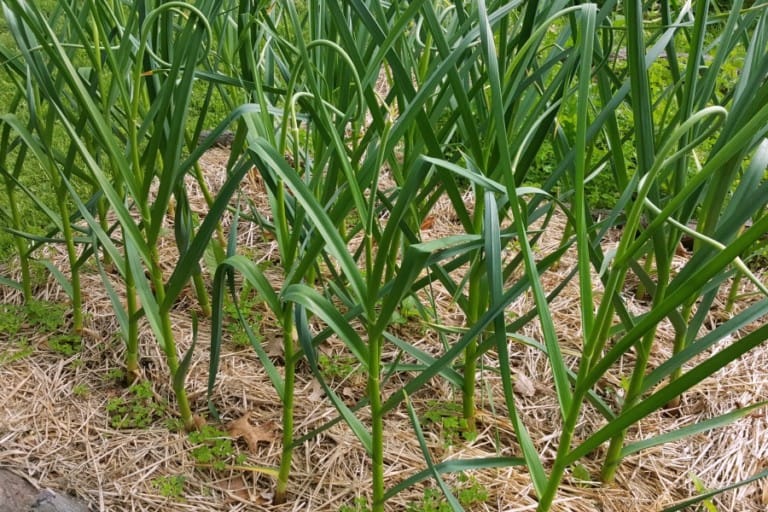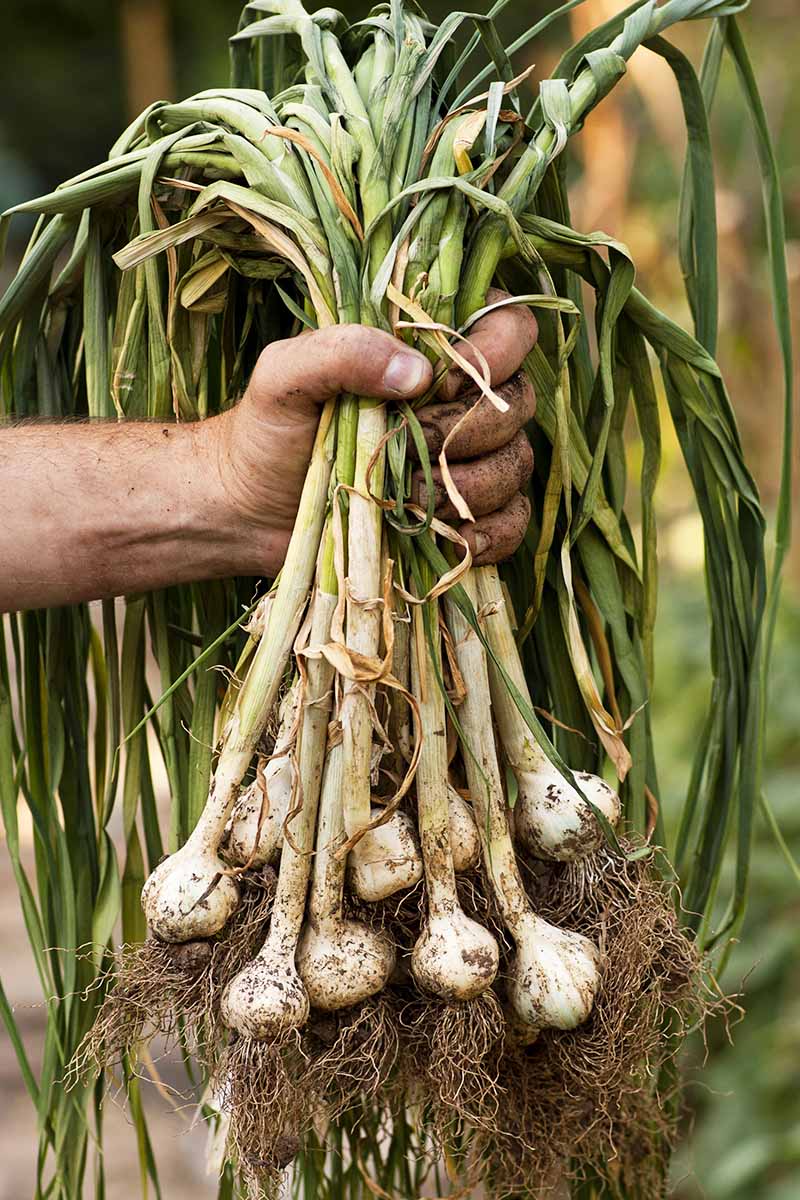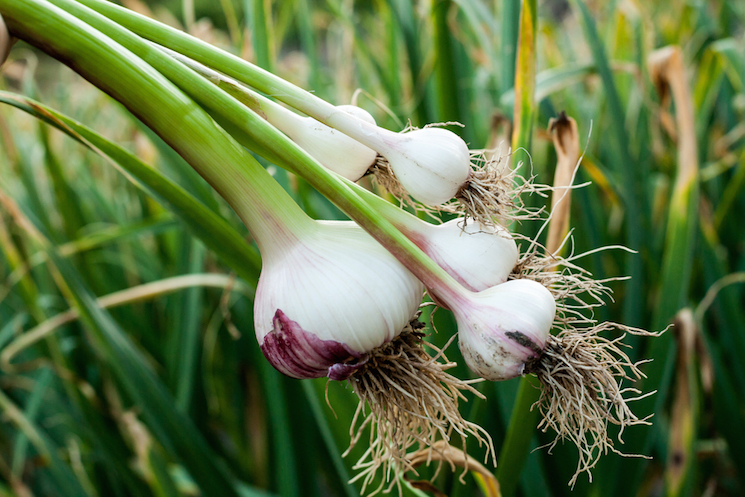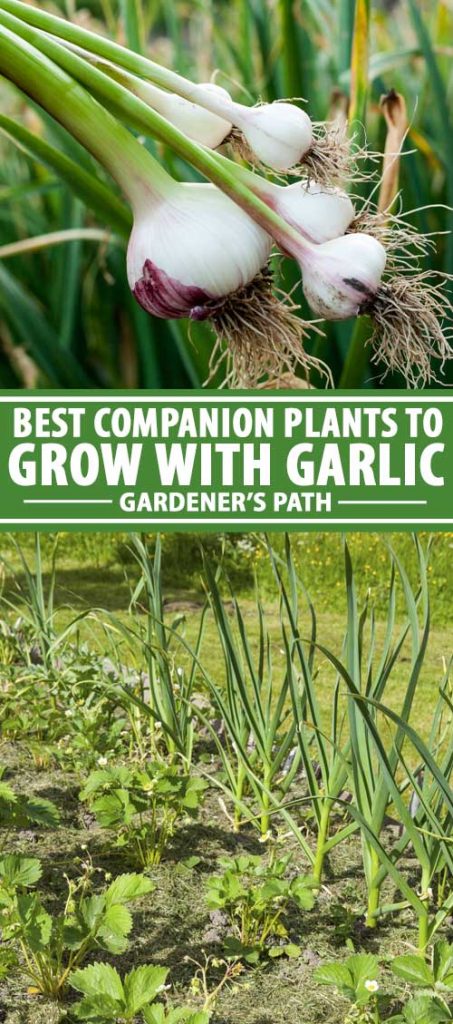Why Garlic Needs Friends in the Garden
Companion planting is a time-tested technique that involves growing different plants together to improve their growth, health, and productivity. By choosing the right companions, gardeners can create a harmonious and thriving ecosystem that benefits from the unique properties of each plant. Garlic, with its strong scent and robust growth habits, is an ideal candidate for companion planting. When paired with the right plants, garlic can thrive, repel pests, and even enhance the flavor and texture of its companions. In fact, many gardeners have discovered that what grows well with garlic can lead to a more resilient and productive garden. By leveraging garlic’s natural defenses, gardeners can create a balanced ecosystem that requires fewer pesticides and fertilizers. In this article, we’ll explore the benefits of companion planting with garlic and provide guidance on selecting the best companions for a thriving garden.
Repelling Pests and Attracting Allies: Garlic’s Natural Defenses
Garlic’s natural properties make it an ideal companion plant for many vegetables and herbs. Its strong scent, which is released through its leaves and roots, can deter a range of pests, including aphids, spider mites, and Japanese beetles. This natural defense mechanism can help reduce the need for pesticides and create a more balanced ecosystem. Additionally, garlic’s sulfur compounds can attract beneficial insects, such as lacewings and ladybugs, which prey on pests that can harm crops. By growing garlic alongside other plants, gardeners can create a protective barrier that shields their crops from harm. For example, planting garlic near roses can help deter aphids and other pests that target these flowers. Similarly, growing garlic with tomatoes can reduce the risk of tomato hornworms and other pests that target these popular fruits. By understanding how garlic’s natural defenses can benefit other plants, gardeners can create a more resilient and productive garden ecosystem.
How to Choose the Best Companions for Your Garlic Crop
When selecting companion plants for garlic, it’s essential to consider factors such as growth habits, soil requirements, and pest resistance. Garlic is a versatile crop that can thrive in a variety of environments, but it does have specific needs that must be met. For example, garlic prefers well-draining soil and full sun to partial shade. By choosing companion plants that share these requirements, gardeners can create a harmonious and productive garden ecosystem. Some key considerations when selecting garlic companions include:
• Growth habits: Garlic is a low-growing crop that can be easily overshadowed by taller plants. Choose companions that have a similar growth habit or can be pruned to maintain a balanced canopy.
• Soil requirements: Garlic prefers well-draining soil with a pH between 6.0 and 7.0. Choose companions that have similar soil requirements to ensure a healthy and thriving garden ecosystem.
• Pest resistance: Garlic’s natural defenses can help repel pests, but some companions can enhance this effect. Choose plants that have natural pest resistance or can attract beneficial insects to create a more resilient garden ecosystem.
By considering these factors, gardeners can create a diverse and thriving garden ecosystem that benefits from the unique properties of garlic and its companion plants. What grows well with garlic? The answer lies in understanding the specific needs and benefits of each plant and how they can work together to create a more productive and resilient garden.
Tomatoes and Garlic: A Match Made in Heaven
One of the most popular and beneficial pairings in companion planting is tomatoes and garlic. This dynamic duo has been used for centuries to improve the flavor, texture, and overall health of tomato crops. When grown together, garlic’s natural defenses can help repel pests that target tomatoes, such as the tomato hornworm and aphids. In return, tomatoes provide shade and support for garlic, which can help to reduce soil temperature and retain moisture.
The benefits of growing tomatoes and garlic together don’t stop there. Garlic’s strong scent can also enhance the flavor and aroma of tomatoes, making them more delicious and nutritious. Additionally, the sulfur compounds present in garlic can help to improve the soil’s structure and fertility, which can lead to healthier and more productive tomato plants.
To make the most of this pairing, gardeners should plant garlic cloves around the base of tomato plants, spacing them about 4-6 inches apart. As the garlic grows, it will form a protective barrier around the tomatoes, deterring pests and attracting beneficial insects. Tomatoes should be planted in well-draining soil with a pH between 6.0 and 7.0, and garlic should be planted in the fall or early spring, depending on the climate.
By growing tomatoes and garlic together, gardeners can create a more resilient and productive garden ecosystem. What grows well with garlic? Tomatoes are just one of many vegetables and herbs that can benefit from garlic’s unique properties. By understanding how to pair garlic with other plants, gardeners can unlock the full potential of companion planting and enjoy a more bountiful harvest.
Other Garlic-Friendly Vegetables and Herbs
Beyond tomatoes, many other vegetables and herbs can benefit from garlic’s unique properties. By understanding what grows well with garlic, gardeners can create a diverse and thriving garden ecosystem. Here are some examples of garlic-friendly plants:
Beans and peas are natural companions for garlic, as they share similar growth habits and soil requirements. Garlic’s strong scent can also help to repel pests that target these legumes, such as aphids and spider mites. Carrots, another popular root vegetable, can also benefit from garlic’s pest-repelling properties. By planting garlic alongside carrots, gardeners can reduce the risk of carrot flies and other pests.
Herbs like basil and rosemary are also excellent companions for garlic. Basil’s sweet flavor can be enhanced by garlic’s pungent aroma, while rosemary’s natural oils can help to amplify garlic’s pest-repelling properties. Other herbs like parsley, sage, and thyme can also benefit from garlic’s unique properties, making them ideal additions to a garlic-friendly garden bed.
What grows well with garlic? The answer lies in understanding the specific needs and benefits of each plant. By selecting compatible companions, gardeners can create a harmonious and productive garden ecosystem that leverages the unique properties of garlic and its friends. Whether you’re growing tomatoes, beans, or herbs, garlic can be a valuable addition to your garden, providing natural pest control and improved flavor and texture.
Designing a Garlic-Friendly Garden Bed
When designing a garden bed that incorporates garlic and its companion plants, several factors must be considered to ensure a harmonious and productive growing environment. Soil preparation is essential, as garlic prefers well-draining soil with a pH between 6.0 and 7.0. Adding organic matter such as compost or manure can help to improve soil structure and fertility, benefiting both garlic and its companion plants.
Sunlight is another critical factor, as garlic requires full sun to partial shade. When selecting companion plants, choose those that share similar sunlight requirements to ensure optimal growth. Spacing is also crucial, as overcrowding can lead to reduced yields and increased pest problems. Plant garlic cloves 4-6 inches apart, and space companion plants according to their individual requirements.
Consider the growth habits of garlic and its companion plants when designing the garden bed. Garlic grows to a height of around 2-3 feet, while companion plants like tomatoes and beans can grow much taller. Planting garlic around the base of these plants can help to create a natural trellis system, providing support and structure to the garden bed.
By carefully considering these factors, gardeners can create a thriving and diverse garden ecosystem that leverages the unique benefits of garlic and its companion plants. What grows well with garlic? The answer lies in understanding the specific needs and benefits of each plant, and designing a garden bed that incorporates these elements in harmony.
Common Mistakes to Avoid When Growing Garlic with Companions
While garlic companion planting can be a highly effective way to improve garden health and productivity, there are several common mistakes that can hinder its success. By being aware of these potential pitfalls, gardeners can take steps to avoid them and maximize the benefits of growing garlic with companion plants.
One of the most common mistakes is overcrowding, which can lead to reduced yields and increased pest problems. Garlic requires adequate space to grow, so ensure that companion plants are spaced correctly to allow for good air circulation and sunlight penetration. Inadequate soil preparation is another mistake to avoid, as garlic prefers well-draining soil with a pH between 6.0 and 7.0. Failure to prepare the soil properly can lead to poor garlic growth and reduced companion plant benefits.
Neglecting to rotate crops is another mistake that can have negative consequences. Garlic is a member of the Allium family, and rotating it with other Allium crops can help to reduce the risk of pests and diseases. Failing to rotate crops can lead to a buildup of pests and diseases, reducing the overall health and productivity of the garden. By avoiding these common mistakes, gardeners can create a thriving and resilient garden ecosystem that leverages the unique benefits of garlic and its companion plants. What grows well with garlic? By understanding the specific needs and benefits of each plant, gardeners can design a garden bed that incorporates these elements in harmony.
Maximizing the Benefits of Garlic Companion Planting
By incorporating garlic into a companion planting strategy, gardeners can unlock a range of benefits that extend far beyond the individual plant. When grown alongside compatible companions, garlic can thrive, producing healthier, more flavorful bulbs that are better equipped to resist pests and diseases. But the benefits don’t stop there. Garlic’s strong scent and growth habits can also be leveraged to improve the overall health of the garden, creating a more resilient and diverse ecosystem.
What grows well with garlic? By understanding the specific needs and benefits of each plant, gardeners can design a garden bed that incorporates these elements in harmony. From tomatoes and beans to carrots and herbs like basil and rosemary, the possibilities are endless. By choosing the right companions, gardeners can create a garden that is not only more productive but also more beautiful and sustainable.
By maximizing the benefits of garlic companion planting, gardeners can enjoy improved yields, reduced pest problems, and a more resilient garden ecosystem. With its natural defenses and ability to repel pests, garlic is the perfect addition to any garden. So why not give it a try? With a little creativity and planning, gardeners can unlock the full potential of garlic companion planting and reap the rewards of a healthier, more productive garden.







